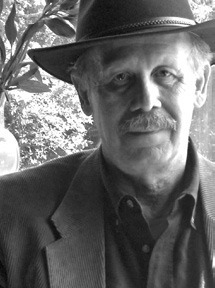THIS WEEK IN TEXAS HISTORY
THIS WEEK IN TEXAS HISTORY
When the presidential limo came to a screeching halt at Parkland Hospital on Nov. 22, 1963, the Governor of Texas believed John F. Kennedy was dead and that his own wounds would prove to be fatal.
In his autobiography In History’s Shadow, published in 1993 the year he died, John Connally relived in vivid and sometimes chilling detail the assassination of President Kennedy and his own brush with death. This column is based upon that outstanding book.
The limousine carrying the President, First Lady Jackie Kennedy, Gov. Connally and his wife Nellie had just turned onto Houston Street in downtown Dallas, when the first shot rang out. The bullet struck the President “in the neck,” wrote Connally, (and) “his hands flew to his throat. The same lethal projectile, he continued, “passed through my chest, shattered my right wrist, and lodged in my thigh. I was still conscious when the third shot blew off part of John Kennedy’s head.”
Except for the occasional lapse of consciousness, Connally remained awake and alert throughout the ordeal. His horrified wife would later admit “that twice during the race to the hospital she had thought I was dead.”
“I came to just when the car jolted to a stop at the emergency room.” His first thought was of JFK despite his certainty that the 35th President was beyond any help. “I knew the orderlies would want to get him out of the car before they could think of treating me.” He did not object and patiently waited his turn.
“They wheeled me into Trauma Room 2, and Dr. Red Duke probed the hole in my chest. (The same Red Duke who became a renowned surgeon and television personality.)
I had what the doctors called a sucking air chest wound. When Nellie pulled me onto her lap (in the limo), the pressure of my arm closed off the hole and kept me alive.”
Otherwise, he later learned, he would have bled to death in eight minutes.
While Duke examined his wounds, which included an exit hole the size of a baseball, a nurse struggled to remove Connally’s pants. To everyone’s surprise the presumably comatose patient suddenly spoke up and in a loud voice said, “Cut them off!”
“I was almost impatient with the time it was taking me to die,” the governor recalled.
“I had made my regrets, that I would leave Nellie alone to see our children and grandchildren grow up.” The silence in Trauma Room 2 was broken only by Duke’s barked instructions to his team. But next door in Trauma Room 1, where doctors tried in vain to bring President Kennedy back to life, it was unmitigated chaos.
Five minutes earlier, as the trauma team was waiting for JFK’s body, a wild-eyed Secret Service agent burst into the room waving a submachine gun. Not knowing who he was or what he might do next, doctors and nurses dropped to the floor.
Next to appear was a man in a business suit with a confused look on his face. The Secret Service agent instinctively reacted with a punch to the jaw that knocked him flat on his back. Rising to one knee, he handed the assailant his FBI identification.
“They say that within minutes 15 doctors had squeezed into Trauma Room 1,” Connally wrote sharing the second-hand information with his readers. “John Kennedy was dead and they all knew it, but no one wanted to be the first to admit that it was hopeless, and speak the words that would confirm the fact that the 35th President was dead.”
“Another doctor, who had been regulating the flow of oxygen, picked up the edges of a white sheet and carefully pulled it over the handsome face of John Fitzgerald Kennedy, age 46.” As a result, no one had to openly acknowledge that tragic fact.
At about the same time, the Governor was on his way to the operating room. “A nurse handed two brown paper bags to an aide to Lyndon Johnson. They contained my bloody and ragged clothing. She told him, almost routinely, that I was not expected to survive.”
Nellie Connally and Jackie Kennedy sat silently across from each other in the hall outside the trauma rooms. Gov. Connally described the scene: “The two women, believing that one husband had been killed and the life of the other hung by a thread, faced each other with little to say. The sorrow, the horror, the shock were evident on the face of each.”
After his three-hour surgery, Connally slept through the events of the next few days.
When he finally awoke, Nellie told him about Lee Harvey Oswald’s arrest and his murder on live television in front of the entire nation. “I may have been the last man in America to know it,” he observed with more than a touch of irony.
Although he avoided publicly criticizing the Warren Commission, John Connally rejected the controversial theory of the “magic bullet.” It made no sense that a single slug went through Kennedy’s neck and throat and caused his grievous wounds.
“If that encourages conspiracy fans, so be it. I can’t tailor my memories to fit someone else’s diagrams.”
Order your copy of “Texas Depression Era Desperadoes.” by mailing a check for $24.00 to Bartee Haile, P.O. Box 130011, Spring, TX 77393.










